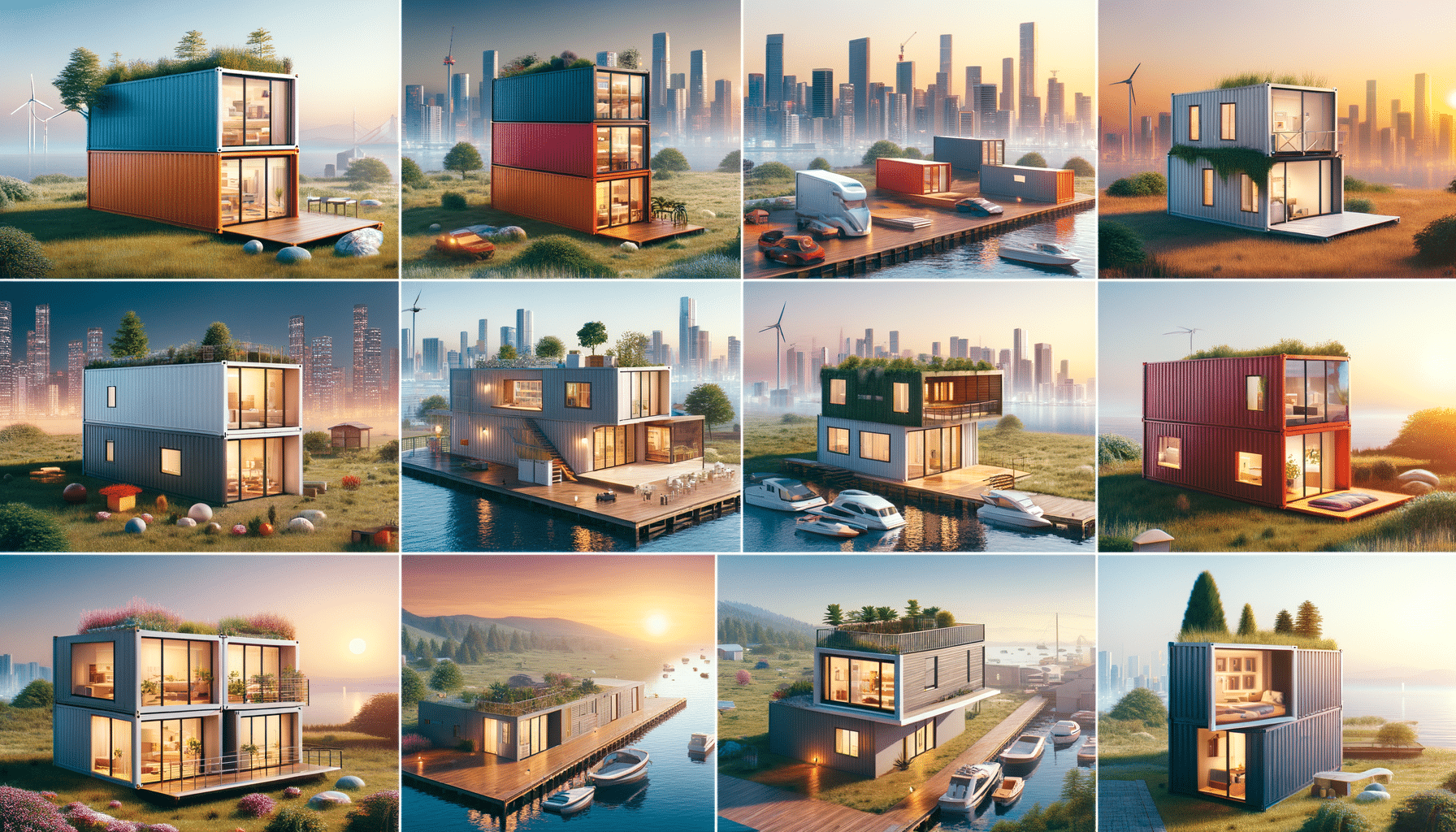Exploring the Innovative World of Container Homes
Container homes are revolutionizing the housing industry by offering sustainable, affordable, and versatile living solutions.

Introduction to Container Homes
Container homes have emerged as a groundbreaking trend in the real estate market, capturing the imagination of eco-conscious individuals and innovative architects alike. These homes, crafted from repurposed shipping containers, present a unique blend of sustainability, affordability, and modern design. As urban spaces become increasingly congested and traditional housing costs soar, container homes offer a creative solution that challenges conventional housing norms. By transforming industrial containers into livable spaces, this concept not only addresses environmental concerns but also provides a versatile platform for architectural creativity.
The Environmental Impact of Container Homes
One of the most compelling arguments in favor of container homes is their positive environmental impact. Each year, millions of shipping containers are abandoned at ports worldwide, contributing to environmental waste. By repurposing these containers into homes, we can significantly reduce waste and carbon footprint. Additionally, the construction process for container homes generally involves less energy consumption compared to traditional building methods. The use of recycled materials minimizes the need for new resources, aligning with global sustainability goals. Furthermore, container homes can be equipped with eco-friendly features such as solar panels, rainwater harvesting systems, and energy-efficient insulation, enhancing their environmental benefits.
- **Reduction in waste**: Utilizes abandoned shipping containers.
- **Lower energy consumption**: Construction requires less energy than traditional methods.
- **Recycling materials**: Minimizes the need for new resources.
- **Eco-friendly features**: Solar panels and rainwater systems can be integrated.
Affordability and Financial Benefits
Container homes are not only environmentally friendly but also economically advantageous. The cost of constructing a container home is often significantly lower than building a traditional house. This affordability opens up homeownership to a broader demographic, including young professionals and families seeking cost-effective housing solutions. The modular nature of container homes allows for scalable design, meaning homeowners can expand their living space as their budget allows. Additionally, the durability of shipping containers, designed to withstand harsh oceanic conditions, ensures long-term structural integrity, potentially reducing maintenance costs. Moreover, container homes can be relocated, offering flexibility and minimizing relocation expenses.
- **Lower construction costs**: More affordable than traditional homes.
- **Scalable design**: Allows for expansion over time.
- **Durability**: Built to last, reducing maintenance costs.
- **Relocatable**: Flexibility in moving the home.
Design Flexibility and Aesthetic Appeal
Beyond their practical advantages, container homes also offer a canvas for architectural innovation. The modular nature of shipping containers allows for a wide range of design possibilities, from minimalist single-container studios to expansive multi-container residences. Architects and designers are continually pushing the boundaries of what can be achieved with these structures, incorporating contemporary aesthetics and functional layouts. The industrial look of container homes can be softened with various finishing materials, such as wood cladding or green roofs, to blend seamlessly with natural surroundings. This flexibility in design not only caters to diverse personal tastes but also encourages creativity and personalization.
- **Modular design**: Offers diverse architectural possibilities.
- **Contemporary aesthetics**: Can be customized with various materials.
- **Personalization**: Encourages creativity and individual expression.
- **Functional layouts**: Tailored to meet specific needs.
Challenges and Considerations
While container homes present numerous benefits, there are also challenges and considerations to address. One major concern is insulation, as the metal walls of shipping containers can lead to temperature extremes. Proper insulation and ventilation are essential to ensure comfort and energy efficiency. Additionally, zoning regulations and building codes vary by location, which can impact the feasibility of constructing container homes. Potential homeowners must navigate these legal requirements to ensure compliance. Another consideration is the potential for corrosion and structural degradation over time, necessitating regular maintenance and protective treatments.
- **Insulation challenges**: Requires effective solutions for temperature control.
- **Zoning regulations**: Varying legal requirements by location.
- **Maintenance needs**: Protection against corrosion and degradation.
- **Ventilation**: Essential for energy efficiency and comfort.
Conclusion
Container homes represent a forward-thinking approach to housing, combining sustainability, affordability, and design flexibility. As the world grapples with environmental challenges and housing shortages, these innovative structures offer a viable alternative to traditional homes. By addressing the challenges of insulation, zoning, and maintenance, container homes can provide comfortable and eco-friendly living spaces. As the popularity of container homes continues to rise, they stand as a testament to human ingenuity and the potential for creative solutions in the face of modern challenges.